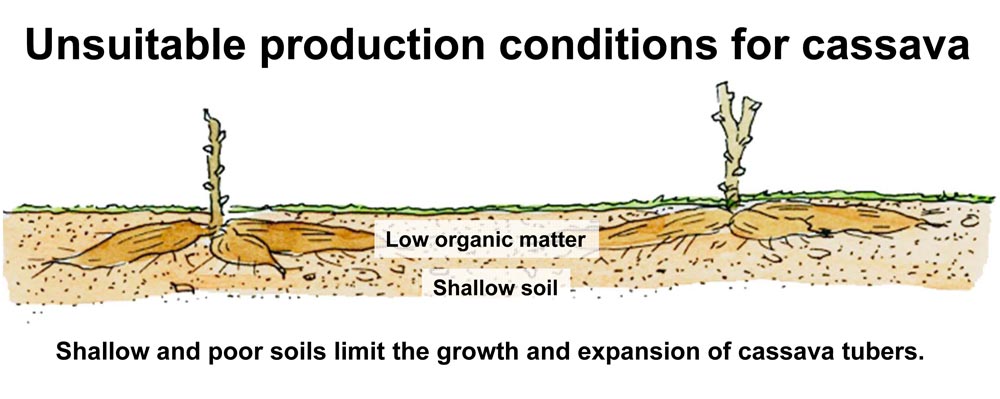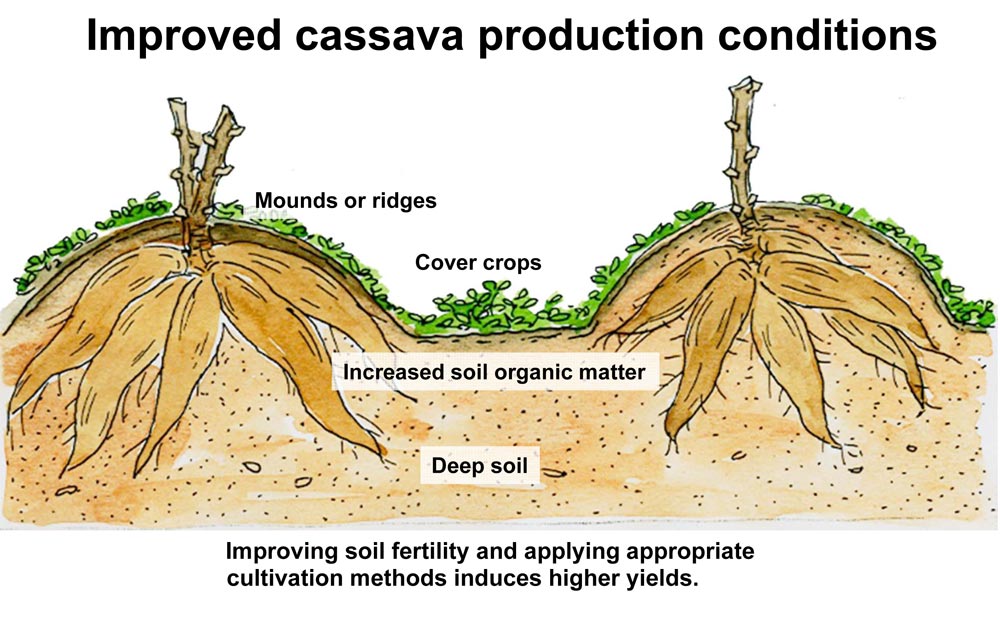General Introduction
Next to yam, cassava (Manihot esculenta) is a commonly produced tuber crop in Africa. It can be used as food and as a cash crop, feed for animals and as a source of industrial raw material. In sub-Saharan Africa, cassava is mostly used for human consumption in various forms ranging from boiling the fresh tuber to processing it into cassava flour. Cassava tubers are an important source of carbohydrates while the leaves, eaten as a vegetable, are a good source of protein and vitamins. Cassava is grown mostly by small-holder farmers as an important food and as a cash crop. According to FAO’s estimates, the average fresh tuber yield of cassava under traditional farming practices in sub-Saharan Africa ranges between 5 and 8 tons per hectare. This is much lower than its potential yield capacity of 40 to 60 tons per hectare.
Challenges facing cassava production in Africa


- Low productivity - Although cassava is an important crop with multiple uses, it does not receive the much needed attention during its production. Farmers normally plant it on very poor soils, where sometimes other crops like maize have failed. Sometimes cassava is grown as an insurance intercrop with other nutrient-demanding crops like maize or sorghum, just in case the main crop fails. Cassava is predominantly a crop for small-holder farmers, who basically grow for subsistence, using rudimentary tools and operating on small and fragmented plots. Infections by the cassava leaf mosaic disease, the cassava brown streak disease and the cassava mealy bugs and scales further reduce crop yields.
- High postharvest losses - Poor postharvest handling leads to uneven quality of the processed cassava and results in contamination by fungi. Poor and inadequate infrastructural facilities for milling and storage, and poor access to roads, which are vital for adding value, further increase the postharvest handling challenges.
However, cassava remains a desirable crop because of its many advantages.
It is easy to produce, adaptable to many environments, has minimal labour requirements and is comparatively less susceptible to pests and diseases than most other crops. This implies that there is need to address the above challenges in order to increase productivity, marketing opportunities and profitability of cassava production. The practices given in this guide can contribute to achieving these goals.
Recommended further reading
- International Institute of Tropical Agriculture (IITA). Starting a Cassava Farm – IPM Field Guide for Extensions Agents. 2008. Free download available at http://old.iita.org
- International Institute of Tropical Agriculture (IITA). Disease Control in Cassava Farms. IPM Field Guide for Extension Agents. http://old.iita.org
- International Institute of Tropical Agriculture (IITA). Weed Control in Cassava Farms. 2000. IPM Field Guide for Extension Agents. http://old.iita.org
- In-Service Training Trust (ISTT). Cassava Production Field Guide. 2008. NRDC Campus, Lusaka, Zambia.
- Technical Centre for Agricultural and Rural Co-operation (CTA). Controlling African Cassava Mosaic Disease.
- Technical Centre for Agricultural and Rural Co-operation (CTA). Larger Grain Borer. 1998. Technical Leaflet No.1

Comments
Post a Comment